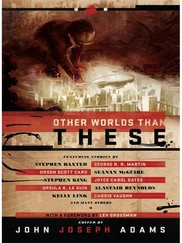Well, dummy, washi is a traditional Japanese paper made from rice or bamboo or some such type thing and then dyed and used to make things like art and stuff. Jimmy loves washi paper, and pretty much the only thing on his to-do list when he came here was to go twirl around Itoya, the famous washi paper store in Ginza, a plan that had completely escaped his mind once he’d gotten here and had his mind blown by how thin I am.
So we scuttle eastwards to Ginza on a mission to get Jimmy some artfully made, tradition-bound transcendence.
The first floor of Itoya is your standard stationary shop. (For me, it’s a big pile of “meh,” but those who are into stationary had better fasten their seatbelts.) It’s the second floor where the magic really happens, when the strings start to flutter and the horns start their low burbling. There, for the world to see (if the world could be crammed into a five-hundred-square-foot room) is roll upon roll upon roll, sheet upon sheet upon sheet, of wild, wonderful washi. All different colors and designs. And as soon as Jimmy sets foot in the room it’s like Charlie and the Chocolate Factory . Except it’s Jimmy and the Washi Paper Store .
Upon our entrance, the floor staff immediately goes on full alert, nodding to each other that there’s a big whitey in the room and he may want to dirty up the place with his greasy American hands. Jimmy doesn’t care. Humming the love theme to Romeo and Juliet , he starts flipping through all the sheets on the closest countertop while I dedicate myself to explaining his behavior to the staff in my serviceable Japanese:
“Don’t worry! Washi is his favorite paper!”
“He came from America to see this washi!”
“He is an artist with the washi!”
The young male floor manager, looking exceedingly worried, starts following Jimmy around to make sure he doesn’t compromise the washi and its proud Japanese tradition.
“He won’t drop the washi!” I assure him. “He is very famous in America for loving washi!”
The manager asks Jimmy in extremely hesitant and uncertain English if he can help.
“Do you have a darker blue version of this?” Jimmy asks, holding up a piece of blue washi, not bothering to adjust his vocabulary or speaking speed for his ESL audience. “Like something a little cloudier and ominous, like a storm is about to break out, you know, like there could be some thunder and lightning coming? That kind of blue.”
The manager’s face falls.
“He ask any darker blue washi!” I translate, and while the manager starts looking for a darker shade, I shadow Jimmy, making sure he’s careful not to breathe too hard on any of the paper.
“Jimmy, you’ve got to speak more slowly and use easier words,” I tell him. “Also, look at him when you’re talking. And open your mouth a little wider.”
“Oh,” he says. “Can’t you just translate what I say for him?” he says.
As much as I want to tell him that my Japanese skills are indeed up to that demanding task-even though just a little over a year ago it had taken me the better part of two weeks to understand the grammar structure of the sentence, “The notebook is on the desk, and the pen is on the notebook”-I don’t think I should commit myself to it. But pride and the instinct to show off beg me to give it a try, so I do.
“Uh, yeah, I guess I could do that.”
“Great,” he says. “Can you tell him that I’d like to see the different types of green he has? With Japanese symbols on them.”
“This is OK?” the manager says, holding up a sheet of dark blue.
Jimmy nods.
“Yes, that is good,” I venture in Japanese. “He also has an interest in seeing green things that you have here.”
The manager smiles, sensing that, for the first time since he began helping us, he just might have the upper hand.
“Green? Green washi, right?” he says, continuing our Japanese tête-à-tête.
“Yes, kanji green washi.”
“Also,” Jimmy interrupts in English, “ask him if they have paler colors with little flecks of other colors in them.”
“Also,” I continue, “do you have bright colors and small various colors on the washi at the same time?”
“And,” Jimmy continues, “do they have any with that little waving cat on them or like one of those demons you see at the temples? Or like those old crazy Noh masks! Ask him if they have Noh masks!”
A single bead of sweat pierces through the skin of my left underarm, thus opening the floodgates for an all-out perspiration celebration.
The manager hands Jimmy some green sheets decorated with various kanji characters and then starts trying to find some bright colors and small various colors on the washi at the same time. He hands more samples to Jimmy and waits expectantly for more instructions from me. He’s not ready to let us browse freely.
“Are you going to ask him?” Jimmy persists.
This charade really shouldn’t be allowed to continue. My ability to say where I am and where I want to go in Japanese is pretty flawless. My ability to request different kinds of washi paper according to Jimmy’s whims-for which I would have to remember the words to all the colors as well as come up with ways of saying “flecks” and “demons” and probably eventually “Arabian sunset” and “mother of pearl”-are negligible. There’s a bunch of washi here, and we are perfectly capable of sorting through it ourselves. But the Japanese are sometimes infuriatingly unwilling to let foreigners touch and pick things out for themselves. Sure, sometimes gaijin break things or stain them or set things on fire, but only the clumsy ones. I really want Jimmy to search around, find what he wants, and proceed to the checkout. I just need this guy to relax and leave us alone.
“He says,” I begin, addressing the gentleman assisting us in a conspiratorial tone, “that you are really handsome.”
It turns out that if you ever want a pushy male shop assistant who strikes you as a little bit repressed to back off and leave you in peace, all you really need to do is tell him your boyfriend finds him physically attractive. No sooner do I say this than his face turns bright red and he launches into a series of short, nervous bows as he backs away and heads for the safety of the cashier’s counter.
“Jimmy, just pick out what you like and let’s get it,” I say. “I’ve just sent a poor guy into a tailspin of homosexual panic.”
“Oh shit,” Jimmy sighs. “Did you at least ask him how much these are per sheet?”
Jimmy’s full-to-bursting bag shivers and shakes on the floor of the train from Ueno Station to Narita Airport. He flips through a copy of Vogue Nippon that someone had left on a bench at the station and comes to a page full of beautiful kimono patterns. He looks at me pointedly and starts circling ones he likes with his index finger.
“You’re dreaming,” I say.
“No,” he replies, sure of himself. “Predicting the future.”
When we get to Narita, we walk slowly to the security checkpoint, trying our best to slow down the time and delay the inevitable goodbyes. In spite of himself, Jimmy has fallen for Tokyo, in his way. I don’t know if it was when we ate takoyaki octopus balls while walking through the smut district of Kabukicho, when we’d been photographed by excitable out-of-town junior high school students at the Edo-Tokyo Museum as if we were Brad and Angelina, or when we basked in the afterglow of a good, long karaoke session during which we’d taken on Chaka Kahn and Sheila E; but at some point, Jimmy began to look at the city as less of a threat and more as a great dream from which he would soon wake up.
“This place is insane,” he said once as we passed a man walking his monkey in Yoyogi Park. “I see why you like it. It kind of suits you.”
Читать дальше












